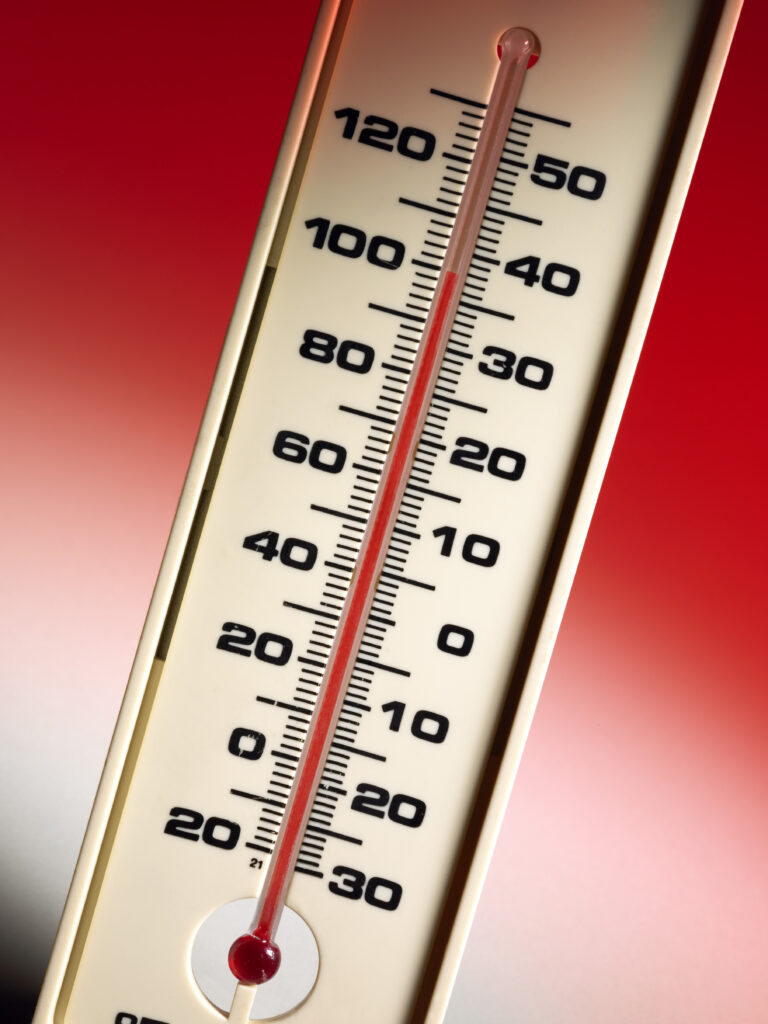At the fall meeting of the American Geophysical Union (AGU), held on December 17, I presented research conducted by myself, Evan Jones, John Nielsen-Gammon, and John R. Christy that analyzed the 30-year trend of temperatures for the continental United States since 1979.
We found the temperature trends measured by unbiased ground-based weather stations in the National Oceanic and Atmospheric Administration’s (NOAA) U.S. Historical Climatology Network (USHCN) were two-thirds as a high as NOAA’s official temperature trends.
The USHCN consists of 1,218 weather stations across the continental United States. Of those stations, we were able to identify a 410-station subset of “unperturbed” stations that have not been moved, had equipment changes, or changes in time of observations, and thus require no “adjustments” to their temperature record to account for these problems.
The study focuses on discovering any substantial temperature trend differences between well-sited and poorly sited weather stations, based on the World Meteorological Organization’s (WMO) approved metric for the classification and assessment of the quality of measurements in proximity to artificial heat sources and heat sinks that affect temperature measurement, such as buildings, concrete, asphalt, air conditioning units, or heating vents.
To determine which stations qualify as a high-quality location or a low-quality station, we undertook a detailed evaluation of station metadata, on-site station photography, satellite and aerial imaging, street-level images from Google Earth, and curator interviews.
NOAA Admits Bias
NOAA acknowledges significant problems with the temperature data from biased stations, saying in one report, “In spite of the United States being a leader in climate research, long term U.S. climate stations have faced challenges with instrument and site changes that impact the continuity of observations over time. Even small biases can alter the interpretation of decadal climate variability and change, so a substantial effort is required to identify non-climate discontinuities and correct the station records.”
In a 2011 paper I co-authored that was published in The Journal of Geophysical Research, the research presented shows temperature trend estimates vary according to site classification, with poor siting leading to an overestimate of minimum temperature trends and an underestimate of maximum temperature trends. The new research presented to AGU further clarifies and reinforces those findings.
Using data from the 410-station subset of the USHCN identified as having experienced no changes in time of observation or station moves from 1979–2008, accounting for the WMO quality metric, the research shows U.S. temperature trends estimated from the relatively few stations in the classes with minimal artificial impact are collectively about two-thirds as large as U.S. trends estimated in the classes with greater expected artificial impact. The trend differences are largest for minimum temperatures (typically the nighttime low) and are statistically significant at the regional scale and across different types of instrumentation and degrees of urbanization.
The research shows the homogeneity adjustments made to account for bias by the National Centers for Environmental Information, formerly the National Climatic Data Center (NCDC), exacerbate the problem by consistently adjusting data from high-quality weather stations upward to make them more similar to the readings from stations biased by one or more factors producing temperature readings and trends higher than those recorded by even the subset of poorly sited or biased stations.
Key Findings
Bias at the microsite level—for instance, artificial sources of heat in the immediate environment of the sensor—in the unperturbed subset of USHCN stations has a significant impact on the mean temperature trend. Well-sited stations show significantly less warming from 1979–2008, with the differences being most pronounced in the minimum temperature data.
Data taken from the older cotton region shelters (CRS) temperature systems—boxes painted white and constructed of wooden slats to allow air to freely flow through the shelter—showed considerable temperature bias when compared to the maximum/minimum temperature systems (MMTS) that replaced them. In the unperturbed subset of USHCN stations, MMTS stations show significantly less warming than CRS stations from 1979–2008.
The 30-year average temperature trend of unperturbed, well-sited stations is significantly lower than the temperature trend of the NOAA-NCDC adjusted homogenized surface temperature record for all 1,218 USHCN stations, with the NOAA/NCDC homogenization adjustment causing well-sited stations to be adjusted upwards to match the trends of poorly sited stations.
Correcting the Record
The majority of weather stations used by NOAA to detect climate change temperature signal have been compromised by the encroachment of artificial surfaces, such as concrete and asphalt, and by heat sources. The new study presented to AGU demonstrates conclusively this issue affects the reported temperature trend, and it shows NOAA’s methods are not correcting for this problem, resulting in an inflated temperature trend.
The trend for U.S. temperatures will have to be corrected, but there is also evidence this same sort of siting problem exists around the world at many other official weather stations, suggesting the same biased temperature trend also manifests itself in the global temperature record.
Anthony Watts ([email protected]) is a 25-year veteran of broadcast meteorology and the founder of the Watts Up With That blog, the world’s most viewed climate website. In 2007, Watts founded SurfaceStations.org, a website devoted to photographing and documenting the quality of weather stations across the United States.
INTERNET INFO
Anthony Watts, et al., “Comparison of Temperature Trends Using an Unperturbed Subset of The U.S. Historical Climatology Network,” December 17, 2015: https://www.heartland.org/policy-documents/comparison-temperature-trends-using-unperturbed-subset-us-historical-climatology-ne





